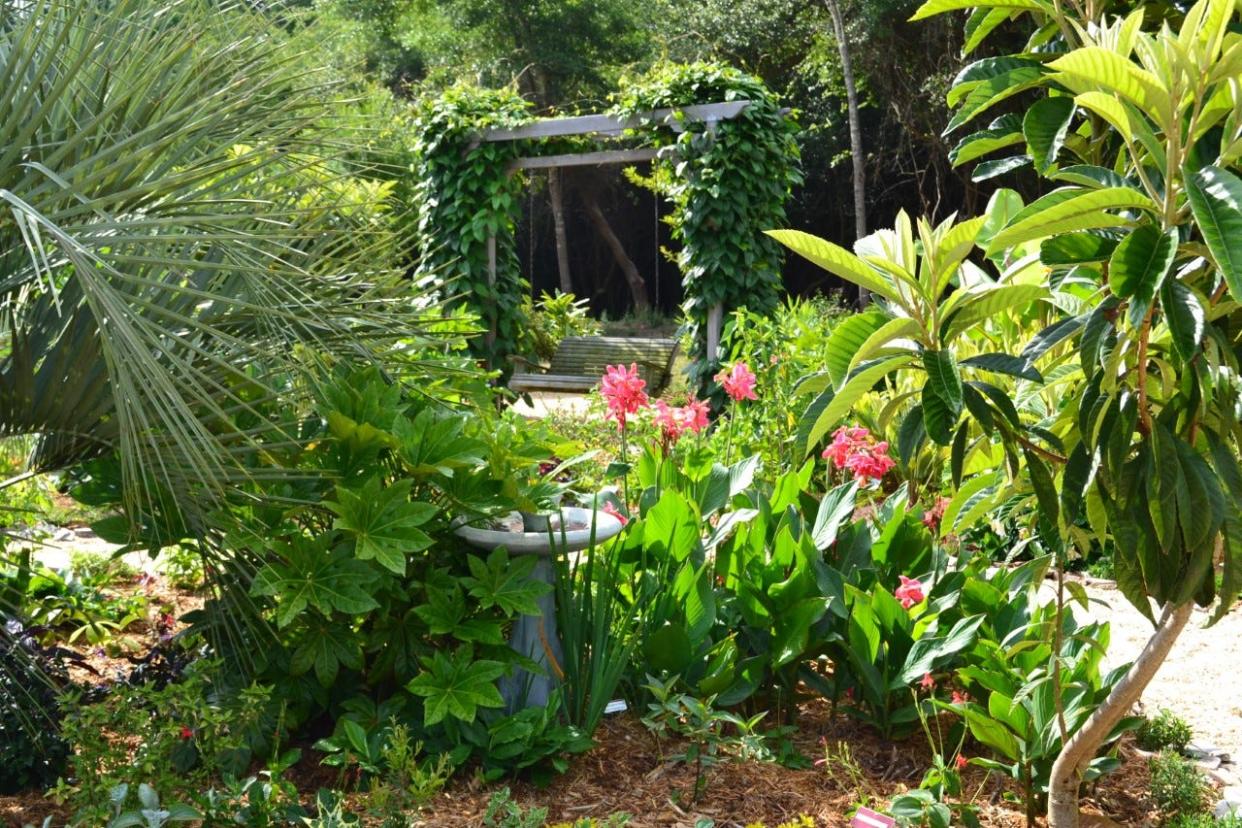Garden Q&A: Gardening trends and priorities for 2022

What type of gardening trends are expected in the new year?
I guess it was impossible for even our outdoor spaces to escape the pandemic’s aftereffects. We have been laser focused on the changes and adaptations of our own lifestyle patterns and routines. The travel limitations, extreme temperatures and elevated stress turned anxiety levels have culminated into new gardening themes.
The pause provided us with an opportunity to reassess what best serves us on both sides of our homes. As a result, horticultural experts have collaborated on what direction consumers are trending towards. And it comes as no surprise that these concepts revolve around our mental health, purpose-filled plantings and climate change.
During what felt like a permanent staycation, residents began making better use of their entire property, not just the indoors. Outdoor spaces evolved into garden rooms, which created an expanse of personal space.
The merger between home life and the natural environment proffered a refuge for calmer living. Folks began incorporating mindful additions to their landscape. New water/fire features, bird houses and feeders, hanging string lights and furniture to relax in to include hammocks. Plants offering aromatic scents, soft textures, fresh edibles and pops of happy colors evolved into sensory utopias.
Blooming gardenias, jasmines, rosemary, lavender and my favorite, sweet almond verbena, are just a few of the many plants we can grow in Northeast Florida. For people with a bent for the visual, statement plants such as Japanese maples, succulents and weeping varieties are more to their liking. Growing plants of all sizes is a layering technique to create greater depth. Sentimental plants that conjure up nostalgic feelings or plants that were gifted to you by others are another example mindful elements to your garden.
Destiny landscapes transport you, if only in the mind, to places we were on hold to actually visit. Given our growing zone and climate, this typically resulted in tropical paradises. Perhaps you already have a bed of canna and crinum lilies, hibiscus shrubs, palms, yucca and banana trees scattered around your home. Adding or moving some of these vibrant and lush plants into a designated area may serve you better.
Taking care of your mind coincides with nourishing your body. During food shortages, the return of wartime victory gardens became both service and family projects. Foodscaping is a great way to incorporate edible plants into your preexisting beds. Intertwining herbs, annuals, ornamentals, fruits and vegetables promotes clean eating while saving money.
The focus shifts to the quality of plantings with rich, organic soils and cost-saving seeds. This style of gardening does require planning. Coupling up plants that have similar lighting, irrigation and fertilizing requirements is a must. A less refined look but the payout is twofold: aesthetic appeal and food production. If you would like to learn more about Landscape Design with Edibles, I encourage you to check out this UF/IFAS publication: https://edis.ifas.ufl.edu/publication/EP475.
Record-breaking heat and continuous weeks of little to no rain are weather extremes that have forced us to deal with climate change. Transitioning from a reactive to a more proactive approach has interested many serious gardeners to embrace adaptation. Plantings that can retain viability in versatile conditions and serve more than one purpose in the garden are preferred. This trend eliminates overplanting and overgrowth with understanding the selections made can tolerate adversity.
First Coast living includes a vast number of homes that border to ponds, lakes, rivers and the ocean. Inland properties are rife with turf holes and undulations that expose lower lying areas, that collect stormwater. If water is a significant factor for your land, consider adding plants that prefer wet feet or are better equipped to control erosion. Others like ferns and daylilies boast large surface root systems that can absorb copious amounts of water quickly.
If the potential for wildfire is your biggest threat, using drought tolerant plantings are preferred. Some species host thick cuticles on their leaves that reduce surface evaporation and deep root systems that can tap deep water tables. Landscape design with slow growing drought tolerant plants is referred to as Xeriscaping.
If you need help identifying which plants work in either area, visit the following website and apply the filter in your search: https://gardeningsolutions.ifas.ufl.edu/plants/.
Just as we have had to adapt, many of our existing plants and trees are trying to do the same to survive. The balance can exist while still adhering to ecological simplicity. We can each do our part by selecting plants that serve ourselves and our community
The Duval County Extension Office’s educational focus for 2022 will be Florida Friendly Landscaping and the 9 principles of smart, sustainable gardening practices. Water is essential but may not always be accessible to all of us in the future. Look to UF/IFAS staff and volunteers to educate the first coast on water conversation in 2022.
Candace Barone is a Master Gardener Volunteer with the Duval County Extension Service and the University of Florida/IFAS. For gardening questions, call the Duval County Extension Office at (904) 255-7450 from 9 a.m. to noon and 12:30 to 3:30 p.m. Monday-Friday and ask for a Master Gardener Volunteer.
This article originally appeared on Florida Times-Union: Garden Q&A: Gardening trends and priorities in NE Florida for 2022

